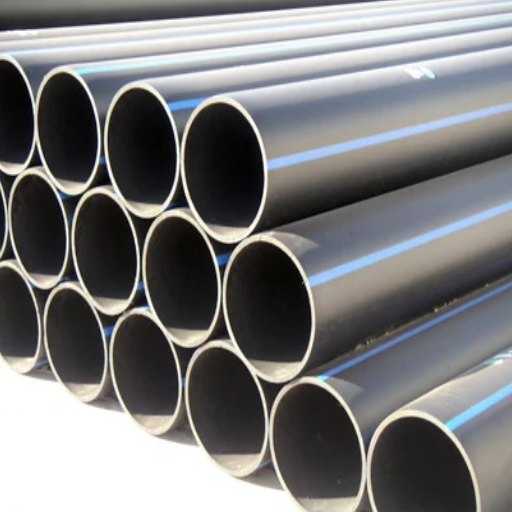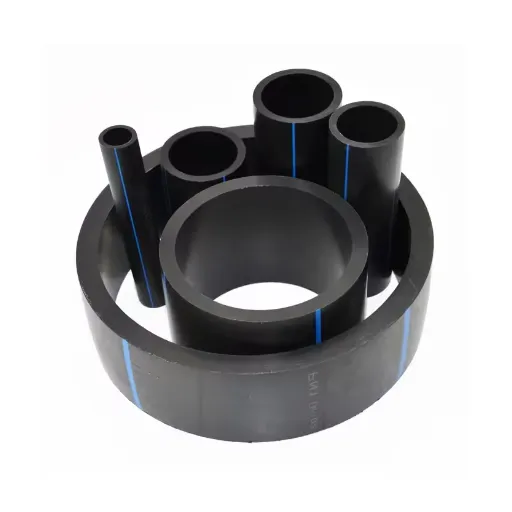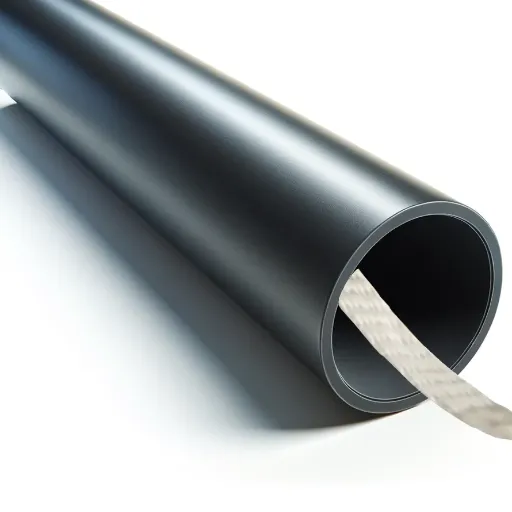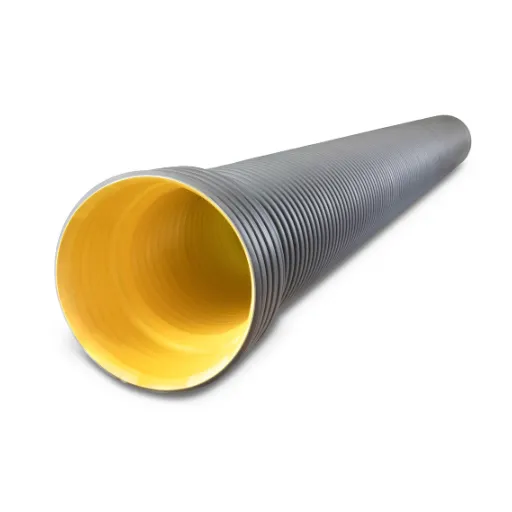High-Density Polyethylene (HDPE) is a widely used thermoplastic polymer lauded for its strength-to-density ratio, durability, and versatility in applications ranging from packaging to piping. However, when evaluating materials for industrial or consumer use, understanding their behavior under heat and potential flammability is a critical factor. This article aims to provide a detailed analysis of HDPE’s flammability characteristics, exploring how it reacts to heat and open flames, as well as examining its burning behaviors and safety implications. By understanding the underlying properties of HDPE and the conditions under which it ignites, stakeholders in manufacturing, construction, and other industries can make informed decisions regarding its utility and safety measures.
What is HDPE and How is it Used?
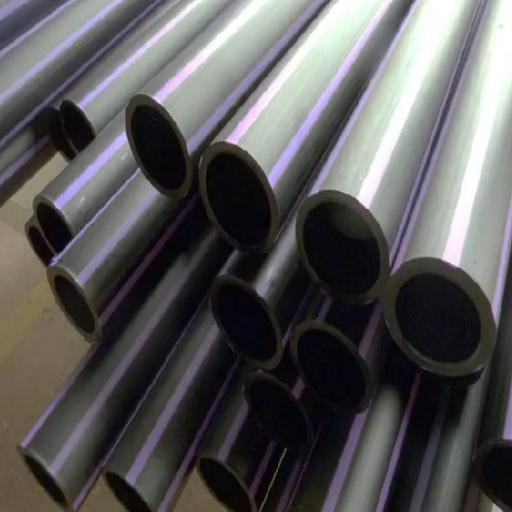
Understanding the Properties of HDPE
High-density polyethylene (HDPE) is defined as a thermoplastic polymer due to its high strength-to-density ratio and its resistance to chemical and physical damage. HDPE is synthesized via ethylene polymerization, and its classification is based on density and molecular weight which typically ranges from 0.93-0.97 g/cm³.
- Melting Point: 130 – 137°C (266 – 279°F); this range shows that HDPE has moderate heat tolerance without distortion.
- Thermal Conductivity: Approximately 0.46 W/m·K; this denotes a low ability to conduct thermal energy when compared with other materials.
- Tensile Strength: Typically in the range of 25 – 31 MPa which gives a window of insight into its structural robust endurance when stretched.
- Flexural Modulus: – 1000 – 1500 MPa, stiffness and resistance of material against bending forces resulting in fracture of yield.
- Flammability: HDPE is combustible and has an auto-ignition temperature of 340 – 370 °C, thus being cautious in overheated areas.
These properties together make HDPE an essential material in industries like packaging, piping, and construction, where its high-performance characteristics can be confidently leveraged.
Common Applications and Uses of High-Density Polyethylene
Because of its excellent material properties, High-Density Polyethylene (HDPE) is widely utilized in a variety of sectors.
- Packaging Industry: Its broad application in producing bottles, containers, and plastic bags stems from its high tensile strength (tensile modulus of 1000 – 1500 MPa), along with solid chemical resistance which guarantees the safekeeping of liquids or chemicals.
- Piping Systems: Due to its low permeability and resistance to corrosion, HDPE is well-suited for water and gas piping systems. Some of the applications for underground piping benefit from the material’s flexibility and high-impact resistance.
- Construction Sector: HDPE is made into geomembranes and building materials due to its environmentally friendly stressors and feature range bounds (typically -50 to 80 °C).
- Automotive Field: It is used in fuel tanks and other components where moderate thermal stability (auto-ignition temperature is 340-370 C) and high chemical exposure is critical.
- Consumer Goods: Toys, recycling bins, and other household storage products are made from HDPE due to their low density, durability, and ease of molding.
These diverse applications demonstrate HDPE’s pivotal role in modern manufacturing, supported by its robustness.
Why HDPE is a Popular Plastic Material
HDPE belongs to that group of plastic materials that are used the most because of their unique combination of mechanical strength, chemical resistance, and processability. In my view, it is primarily preferred for the following reasons:
- High Strength-to-Density Ratio: Considering the strong molecular structure of HDPE, its tensile strength is excellent while its weight is surprisingly low, with a density of 0.930 – 0.970 g/cm³.
- Chemical Resistance: It is resistant to many chemicals such as acids, bases, and most organic solvents, thus it is ideal for use in pipes, containers, and other equipment that are subjected to chemical use.
- Thermal Stability: HDPE has a moderate thermal performance with an auto-ignition temperature is 340 – 370 °C that allows the material to perform well under a range of operating conditions.
- Ease of Processing: Moreover, it can be easily processed with conventional techniques such as injection molding and blow molding.
These features, to a great extent, explain the popularity of HDPE and also reveal the reason for its continued relevance in industries like packaging as well as construction.
Does HDPE Catch Fire Easily?
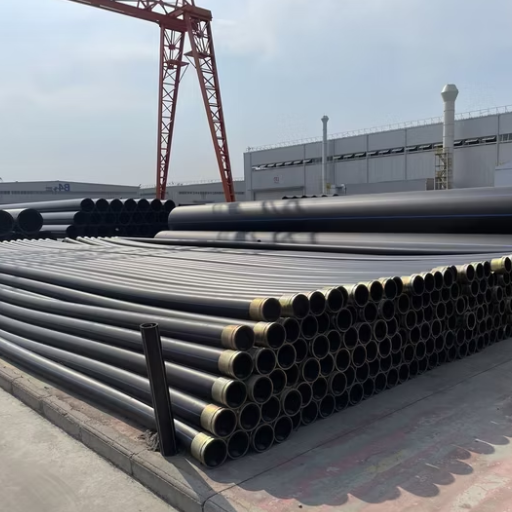
Factors Influencing HDPE’s Flammability
Below are some considerations on the flammability of HDPE which is a thermoplastic polymer that is widely used in different industries.
- Ignition Temperature: HDPE is not a material that catches fire easily, this is due to the autoignition temperature that rests at around 349 Degrees Celsius (660 degrees Fahrenheit). Since the material catches fire without an external heat source, it is less likely to initiate under reasonable conditions.
- Oxygen Index: The limiting oxygen index (LOI) for HDPE is between 17.4% and 18.2%. Because the amount of oxygen in the air is around 21 This indicates, that HDPE can burn in the air without support but can only do so under specific conditions.
- Thermal Degradation: Thermal degradation of HDPE starts at temperatures above 300C. This is the point at which the material begins giving off gaseous byproducts that are flammable. Nonetheless, the degradation process is subject to environmental controls in which case, it is controllable.
- Material Thickness and Additives: With the incorporation of fire retardant materials, the addition of thickness does stretch the boundaries of the polymer’s flammability. The use of halogenated compounds as novas and fire retarded phosphate-based additives increases its fire resistance.
As a practical matter, the addition of flame arsonists into HDPE confines its usage for protection, within industry limits. And while the polymer is prone to catching fire, its high threshold for ignition serves as an advantage for those working with it.
Comparing HDPE with Other Plastics in Terms of Flame Retardancy
When examining flame retardancy, there are notable distinctions between HDPE and other types of plastics” based on the chemical structure and the kinds of additives compatible with it. HDPE, unlike polycarbonate (PC), which ignites at some 932 °F (500 °C), has a relatively higher ignition temperature, approximately 662 °F (350 °C), which is higher than that of polypropylene (PP) but generally lower than materials like polycarbonate. In contrast to PVC (polyvinyl chloride), which emits toxic compounds when burned, HDPE, along with burning with less smoke, primarily combusts into carbon dioxide and water.
Also, additive modification can extensively change the flame retardant performance. For example, HDPE’s simple molecular construction allows it to easily integrate with Bromine-based flame retardants, making it more resistant while altering almost no other physical attributes. On the other hand, other plastics like ABS (Acrylonitrile Butadiene Styrene) have lower thermal stability and higher flammability which makes it necessary for a change of the additive treatment used.
In summation, while HDPE’s flame retardancy can be modified to be optimal for numerous plastics in tailored applications, the decision on which material to use should be dependent on conditions at the final use level such as operational temperatures, ignition sources, and toxicity thresholds to ensure that safety and efficiency are not compromised.
How Does High-Density Polyethylene React to High Temperatures?
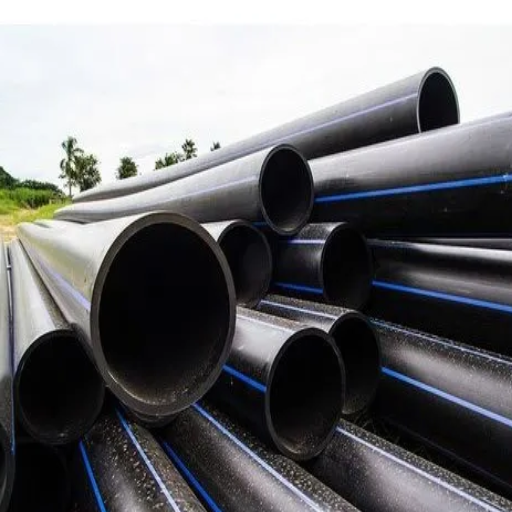
What Happens When HDPE Reaches its Transition Temperature?
Once the High-Density Polyethylene (HDPE) approaches its transition temperature, primarily the melting zone, it begins to show changes in its physical and mechanical properties. Both molecular weight and level of crystallinity determine the HDPE melting point which is from 120 °C to 130 °C. Within this range, HDPE changes from a tough, semi-crystalline solid to a softened and even fully melted state.
The process in which the crystalline regions begin to decompose within the polymer matrix results in a decline in mechanical strength as well as dimensional stability. This permits the HDPE to be remolded or extruded into various integral shapes during the manufacturing process. The specific heat capacity of HDPE averages 2.3 J/g°C along its thermal conductivity which is approximately 0.44 W/m·K guarantees that the material can concentrate and disperse heat efficiently, but unvarying heating has to be done to avoid thermal degradation.
It is important to highlight that excessive heating over the decomposition temperature of 335 °C poses a risk of chemical degradation with an escape of poisonous and flammable gases. Therefore, it is essential to consider clean control of heating parameters when high temperatures are used to process HDPE.
Combustion Characteristics of HDPE
High-density polyethylene (HDPE) has significant combustive features stemming from its composition as well as its thermal characteristics. Upon ignition, HDPE burns with a blue flam,e and a paraffin-like odor is produced that is caused by the emission of hydrocarbons during the combustion process. The material possesses a calculated caloric value which tends to differ between 43 to 47 MJ/kg depending on the specific formulation differences. These values are evidence of the material’s high energy content and fuel efficiency regarding energy relapsed per unit mass.
Because of this burning manner, carbon dioxide and water mimic the primary combustion products; however, under oxygen-starved conditions, carbon monoxide and other volatile organic compounds may be produced. Like all polymers, HDPE has a very high melting point however, it will begin to soften and drip long before the material reaches its auto-ignition temperature which is approximately 340 °C. It is important to monitor controlled burning or incineration as these emissions can produce harmful byproducts, particularly in an environment where the appropriate filtration systems necessary to minimize risks are absent.
I would stress the necessity to stay within the specified temperature ranges to reduce the emissions of dangerous substances. Proper oxygen availability during combustion processes is important to oxidize as many hydrocarbons as possible. In addition, complying with the recommended material such as the heat of combustion (43–47 MJ/kg) and self-ignition temperature (340 degrees Celsius) demonstrates the need for temperature and safety measures when using heat in conjunction with HDPE.
Can HDPE be Made Less Flammable?
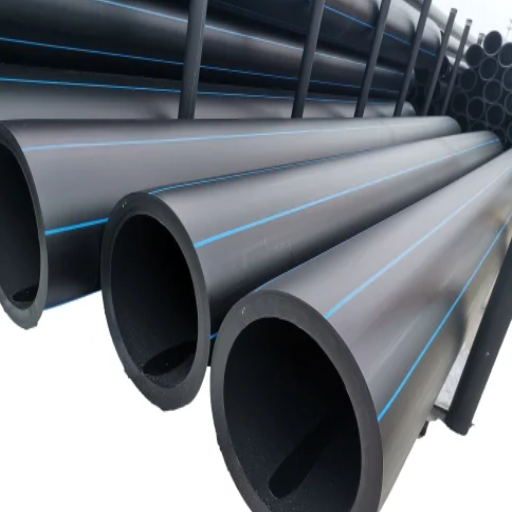
Methods to Enhance Flame Retardancy in HDPE
There are numerous techniques to increase the flame retardancy of HDPE. In my opinion, one of the most effective ways is the use of halogen-free flame retardant additives, such as aluminum hydroxide (Al(OH)₃) or magnesium hydroxide (Mg(OH)₂). These substances undergo endothermic decomposition at higher temperatures, producing a vapor that cools the substance while simultaneously extinguishing the flames. These additives are considered to be most productive when applied generously between 40-60 wt%, as this range offers an optimal balance between retaining mechanical properties and enhancing productivity.
Intumescent systems can also be added as passive fire protection. These systems consist of ammonium polyphosphate (APP) mixed with other compounds such as pentaerythritol and melamine which produces a carbonaceous char layer upon burning. This barrier enhances the insulation of the underlying substrates for better protection against heat. Specific ratios are usually 20-40 wt% but will have to consider the exact purpose.
Additionally, more surface treatment methods can be introduced such as coating with a thin layer of fire-resistant material. For instance, using silicone resins or expandable graphite coatings will create a bushfire protective layer that adds impressive resistance to the substrate material.
Certain techniques are accessible that can increase the flame retardancy of HDPE, however, all such techniques need to be checked against various which include the limiting oxygen index, which must exceed 26%, as well as the UL94 flammability standard where the V-0 rating is given preference. These techniques also need to guarantee that the MI for HDPE does not fall outside of the specified range regarding the melt flow indices. The primary goal of all these evaluations is to ensure that thermal or mechanical processing along with end-use properties of the HDPE is maintained within acceptable limits.
With the appropriate application of these techniques and following these criteria, the flame retardancy of HDPE could certainly be enhanced significantly.
The Role of Composite Materials in Reducing Flammability
Composite materials are an important part of making high-density polyethylene (HDPE) less flammable. This is done by adding flame-retardant materials that work together to suppress or delay combustion. Examples of flame retarding additives are aluminum hydroxide (Al(OH)₃) and magnesium hydroxide (Mg(OH)₂), which reduces water by stepwise decomposition to cool the polymer and dilute flammable gases. Ammonium polyphosphate is also common because it serves a secondary role of char promoter which protects the underlying material from heat and oxygen.
- Limiting Oxygen Index (LOI): Enhanced flame retardancy requirements are met if this index is above 26%. LOI indicates the lowest limit of oxygen needed to support combustion.
- UL94 Flammability Rating: A V-0 grade is preferred, as that means flames are put off within 10 seconds without dripping or secondary ignition.
- Melt Flow Index (MFI): The MFI of HDPE should be maintained within the range specified for almost every application as between 0.1 to 10.0 g/10 min. to ensure processability during thermal or mechanical processing.
- Char Yield: Higher char yield percentages are preferred due to the enhanced thermal stability provided by the non-flammable residue created from the combustion of phosphorus-based additives.
Choosing and optimizing the right composite material greatly improves HDPE’s flame retardancy without compromising mechanical properties and processing efficiency.
Advancements in HDPE Polymer Technology
The focus of recent research and development in HDPE polymer technology has been on improving the material grade to satisfy the rigid requirements within the industry whilst achieving sustainability and performance. Key innovations comprise the use of flame retardant additives, modification of the polymer molecular weight distribution, and incorporation of nanocomposites for improved thermal and mechanical properties.
- Flammability Rating Justification: A V-0 rating can be achieved through the use of halogen-free flame retardants such as phosphorus and or intumescent flame retarding materials. These additives enhance flame extinction rates and were found to yield lower fine particulates as well as comply with other safety procedural standards.
- Melt Flow Index (MFI): The MFI must be set about the application. For example, precise values of 0.2 – 5.0 g/10 min are ideal because they provide a balanced fall between ease of processing and strength for pipes or blow-molded parts. Higher MFI, for example up to 10.0 g/10 min, is achieved with some plastics that have high flow rates and therefore are used in injection molding.
- Char Yield Justification: Increased char yields, frequently more than 25% under test combustive conditions, are facilitated by the incorporation of phosphorus or silicon-based synergists. This increases the yield of char during thermal degradation due to the increased thermal stability from the protective shield formed around the material which dramatically lowers heat exposure.
All of these advances in science and technology contribute to the increase of mechanical performance, processing efficiency, flame retardancy, and safety in modern applications of HDPE.
Is Recycling Possible for HDPE?
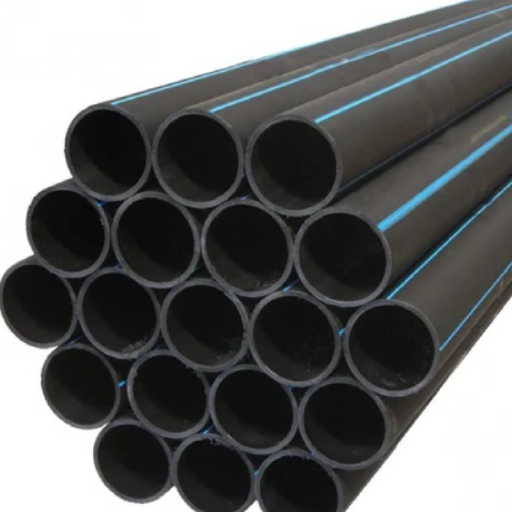
How HDPE Recycling Works
Recycling HDPE involves a systematic process designed to maintain material integrity while promoting sustainability. First, HDPE waste is collected, sorted, and cleaned to remove contaminants. Next, the material undergoes shredding into granules or flakes, which are then washed again for further purification. These granules are melted and reprocessed into pellets, which serve as raw material for new applications.
- A range of melting points: This range guarantees energy advancement throughout the reprocessing stages while simultaneously ensuring that thermal degradation is kept to a small minimum.
- Density: To keep recycled materials durable and with proper mechanical properties, the density must remain high in comparison to virgin HDPE.
- MFI Monitoring: An MFI range of 0.2-5.0 g/10 minutes permits blend applications in various processes such as piping, blow molding, or sheet extrusion. MFI may require adjustment by blending or adding to return optimal flow characteristics, in which case the MFI needs to deviate.
The functional properties of recycled HDPE can be closely matched to those of virgin HDPE. This process lowers environmental impact and helps meet technical and economical criteria for circular material use.
Benefits of Recycling High-Density Polyethylene
- Reduction of Environmental Impact: Recycling of HDPE leads to a significantly lowered demand for the virgin polymer economy. This reduction of resource extraction and energy use in production further leads to a reduction of Green House Gas emissions. Studies show that the manufacturing of recycled HDPE can result in carbon emissions being reduced by as much as 25% as opposed to that of virgin HDPE.
- Improved Waste Management: Recycling helps reduce HDPE waste in landfills, thus alleviating the burden of waste management. Because of its non-biodegradable nature, the recycling of HDPE actively helps mitigate the risk of environmental pollution for years to come.
- Cost Savings: Having features akin to virgin material, recycled HDPE proves to be cheaper. It can be easily utilized in various industrial processes thanks to having a density of 0.94–0.97 g/cm³, a preferable MFI of 0.2-5.0 g/10 mi,n and being produced at efficient and low cost.
- Preservation of Resources: Through the recycling process, polyethylene resources can be used sustainably. The reprocessed material has Mechanical and Thermal Stability and a melting point of 120–135°C, therefore being able to be used for critical manufacturing processes like molding and extrusion.
- Widespread Use: Reprocessed HDPE has cross-industry applicability as it is used in the production of durable appliances including but not limited to piping systems, containers, and packaging films while ensuring that sensitivity parameters such as density and MFI are within the required operating range.
It is essential to point out that the recycling of HDPE helps in achieving environmental sustainability while simultaneously meeting industrial needs for strong, cheap, and flexible materials. Following strict technical protocols, however, allows manufacturers to make the most out of recycled HDPE at minimal ecological and monetary costs.
Reference sources
Combustibility and flammability
Frequently Asked Questions (FAQs)
Q: Is HDPE flammable?
A: HDPE, or high-density polyethylene, is not highly flammable, but it is combustible. This means that HDPE can catch fire under certain conditions, but it does not ignite easily compared to other materials. It continues to burn when exposed to a flame once ignited.
Q: What is the melting point of HDPE?
A: The melting point of HDPE typically ranges from 120°C to 180°C. This range allows HDPE to be used in applications requiring heat resistance without losing its properties.
Q: How does the density of HDPE affect its flammability?
A: The density of HDPE contributes to its structural properties but does not significantly impact its flammability. High-density polyethylene is less likely to ignite compared to low-density variants due to its compact polymer chains.
Q: What are the types of polyethylene related to HDPE?
A: HDPE is one of several types of polyethylene, which also include low-density polyethylene (LDPE) and linear low-density polyethylene (LLDPE). These types vary in their density and molecular structure, affecting their flexibility, strength, and melting points.
Q: How does HDPE’s low water absorption rate influence its use?
A: HDPE’s low water absorption rate makes it suitable for applications in moist environments, such as packaging materials and bottles and containers. This property helps prevent degradation and maintains the integrity of products made of HDPE.
Q: What role does nitrogen play in the flammability of HDPE?
A: Nitrogen can be used in environments where reducing flammability is crucial. Although HDPE is not highly flammable, nitrogen can be used to create conditions that further minimize the risk of combustion by displacing oxygen, which is necessary for burning.
Q: Is HDPE approved for use in food contact applications?
A: Yes, HDPE is approved for use in food contact applications. It has high chemical resistance and does not corrode, making it a safe choice for packaging materials that come into direct contact with food.
Q: Why is HDPE used in industrial applications?
A: HDPE is used in various industrial applications due to its high chemical resistance, low friction coefficient, and durability. It is suitable for fabrication processes and can withstand a lot of heat without losing its structural integrity.
Q: What is meant by “HDPE is a polyolefin”?
A: Polyolefin refers to a group of polymers produced from olefin (alkene) monomers. HDPE is a type of polyolefin, which means that it is made from the polymerization of ethylene molecules, resulting in strong polymer chains with high resistance to chemicals and environmental stress.



